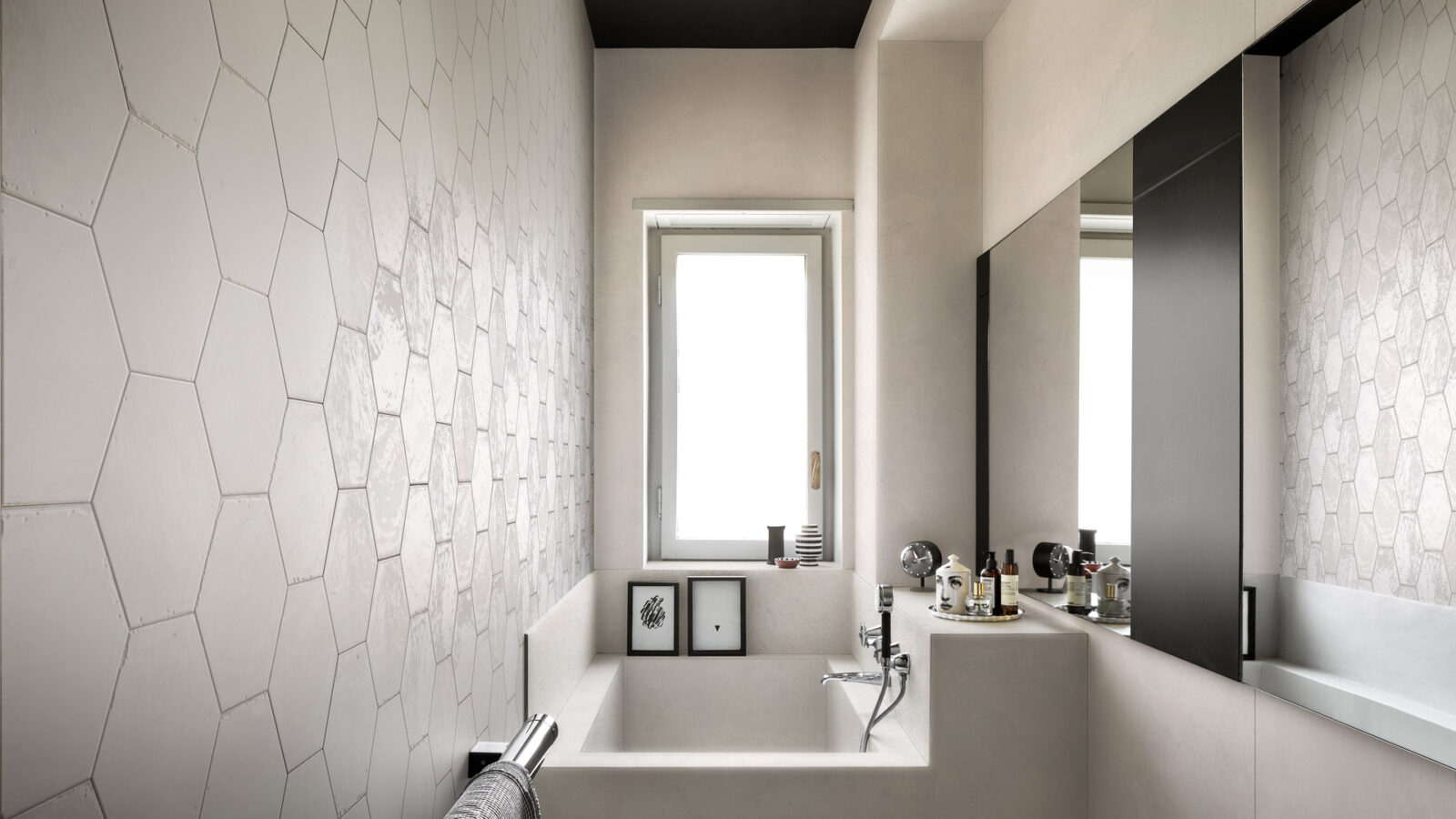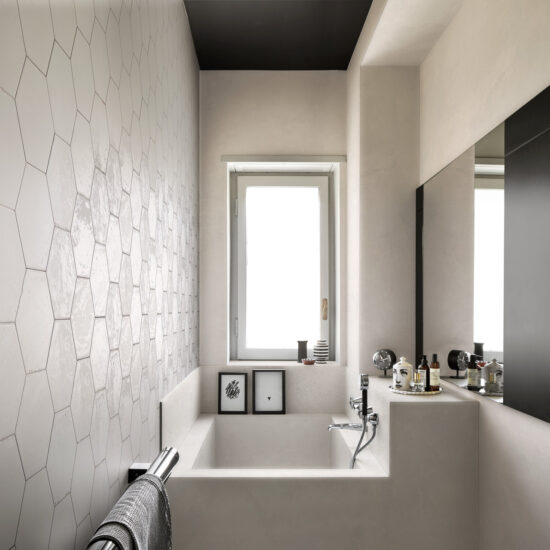
- Colors 7
- Surfaces 2
- Sizes 3
For the past few years hexagonal tiles have been back in vogue, revamped by technology-nowadays hexagonal tiles are made of porcelain stoneware, no longer of pressed concrete-and enriched with a boundless variety of hues and patterns.





Hexagon tiles have been back in fashion for some years now, updated in their production method - nowadays hexagon tiles are made from porcelain stoneware and not pressed cement as in the past - and enhanced by an unbounded variety of shades and decors.
Although hexagon tiles have an antique aura, they still fit attractively into many styles: from rustic to minimalist, from industrial to shabby chic and from ethnic to classical. They are distinguished from the conventional square and rectangular sizes by their shape, which is already decorative in its own right, even in the simplest solid colour variants. This form of tile is an excellent solution for enlivening even a rather dull kitchen or bathroom.
For hexagon tiles, Marazzi offers the concrete and terracotta effect in various colours and graduated shades, with geometrical motifs inspired by the cement tile effect and tiny patterns drawn from fabrics. It also offers the realistic veining of natural materials in the marble and wood effects. The marble effect is available in multiple colours - from black to white - also in the form of hexagon tiles with sophisticated multicoloured mosaics.
Hexagon tiles in the kitchen are an excellent choice both for the floor and for covering the walls, especially for the backsplash behind the hob and sink. Similar use can be made of hexagon tiles in the bathroom: for the floor, for covering walls up to the ceiling or to the halfway point, or for emphasising a single feature such as the shower enclosure.
Hexagon tiles can be used on their own, alternating solid colours and decors across the room, or utilising monochrome tiles and patterns to distinguish between horizontal and vertical surfaces. Otherwise, hexagon tiles combine well with tiles of other shapes, creating effects with the same materials and colours or opting for a sharp contrast.